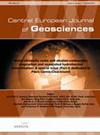Anterior dental microwear texture analysis of the Krapina Neandertals
引用次数: 27
Abstract
Some Neandertal anterior teeth show unusual and excessive gross wear, commonly explained by non-dietary anterior tooth use, or using the anterior dentition as a tool, clamp, or third hand. This alternate use is inferred from aboriginal arctic populations, who used their front teeth in this manner. Here we examine anterior dental microwear textures of the Krapina Neandertals to test this hypothesis and further analyze tooth use in these hominins.Microwear textures from 17 Krapina Dental People were collected by white-light confocal profilometry using a 100x objective lens. Four adjacent scans were generated, totaling an area of 204x276 μm, and were analyzed using Toothfrax and SFrax SSFA software packages. The Neandertals were compared to six bioarchaeological/ethnographic samples with reported variation in diet, abrasive load, and non-dietary anterior tooth use.Results indicate that Krapina anterior teeth lack extreme microwear textures expected of hominins exposed to heavy abrasives or those that regularly generated high stresses associated with intense use of the front teeth as tools. Krapina hominins have microwear attributes in common with Coast Tsimshian, Aleut, and Puye Pueblo samples. Collectively, this suggests that the Krapina Neandertals faced moderate abrasive loads and only periodically used their anterior teeth as tools for non-diet related behaviors.克拉皮纳尼安德特人前牙微磨损结构分析
一些尼安德特人的前牙显示出不寻常的和过度的总磨损,通常是由于非饮食使用前牙,或将前牙列用作工具、夹子或第三只手。这种交替使用是从北极土著居民那里推断出来的,他们用这种方式使用门牙。在这里,我们研究了克拉皮纳尼安德特人的前牙微磨损纹理,以验证这一假设,并进一步分析这些古人类的牙齿使用情况。采用100倍物镜白光共聚焦轮廓术采集17例Krapina Dental People的微磨损纹理。生成4个相邻的扫描图,总面积为204x276 μm,使用Toothfrax和SFrax SSFA软件包进行分析。尼安德特人与六个生物考古/人种学样本进行了比较,报告了饮食、磨料负荷和非饮食前牙使用的差异。结果表明,Krapina前牙没有极端的微磨损纹理,这是人类暴露于重磨料或频繁使用前牙作为工具而经常产生高应力的人所期望的。克拉皮纳古人类与尖山海岸、阿留申和普耶普韦布洛样品具有共同的微磨损特征。总的来说,这表明克拉皮纳尼安德特人面临适度的磨蚀负荷,只是周期性地将他们的前牙作为与饮食无关的行为的工具。
本文章由计算机程序翻译,如有差异,请以英文原文为准。
求助全文
约1分钟内获得全文
求助全文
来源期刊

Central European Journal of Geosciences
GEOSCIENCES, MULTIDISCIPLINARY-
自引率
0.00%
发文量
0
审稿时长
>12 weeks
 求助内容:
求助内容: 应助结果提醒方式:
应助结果提醒方式:


